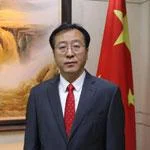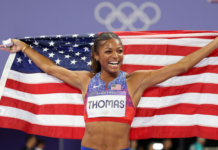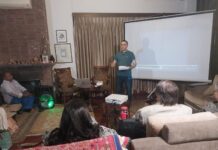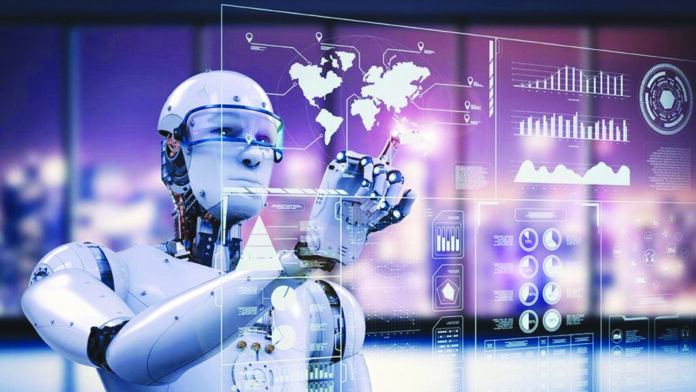In the rapidly evolving nexus of technology and law, we find ourselves confronting unprecedented challenges that test the very foundations of copyright law. As a corporate and technology lawyer, I am deeply immersed in these discussions, echoing the concerns we previously raised in the podcast “Will AI Replace Human Judges?” featuring myself and hosted by Syed Muzzamil Hasan Zaidi. The conversation now extends to the realm of creative arts, where AI is not merely an assistant but a creator, generating content that necessitates a reevaluation of our existing legal frameworks governing copyright and ownership.
In the USA, the discourse surrounding the copyright issues of AI-generated content has recently been brought to the fore by a landmark case. A district court ruled that AI-generated art does not qualify for copyright protection. This ruling has ignited a fervent debate in the legal community, bringing to light the complexities and nuances associated with AI-generated content.
Imagine a scenario where Kanye West collaborates with an AI software to produce a rendition of a popular Pakistani song, or a situation where MidJourney utilizes AI technology to modify paintings originally crafted by Leonardo da Vinci. In these instances, the delineation of copyright ownership becomes a complex and multifaceted issue. The recent court ruling suggests that AI-generated content, in its current legal interpretation, falls outside the purview of copyright protection, leaving it potentially vulnerable to unrestricted use and reproduction.
This case sets a significant precedent, highlighting the urgent need for a comprehensive legal framework that can adeptly navigate the intricacies of AI-generated content and address the potential copyright issues that may arise.
Moving to the UK, we observe a legal landscape that, while more defined compared to the USA, still harbours significant ambiguities concerning AI-generated content. According to the Copyright, Designs and Patents Act of 1988, works generated by computers in circumstances devoid of human authorship can potentially be protected by copyright. However, this provision seems to raise more questions than it answers, creating a fertile ground for legal debates and discussions.
OpenAI, the entity behind ChatGPT, has ventured to navigate this complex terrain by assigning users “all its right, title, and interest in the output”. This stance, although providing a degree of clarity, also transfers a substantial responsibility onto the users to ensure that the utilization of such content does not breach existing laws, a task that is far from straightforward.
As we delve deeper into this complex issue, it becomes apparent that a unified legal framework is desperately needed. A framework that not only addresses the subtleties of AI-generated content but also safeguards the interests of all parties involved, fostering a harmonious integration of technology and creativity.
Let us draw inspiration from our rich history of legal discourse and innovation, channelling our collective expertise to craft a legal framework that is both robust and flexible, capable of adapting to the ever-changing landscape of technology and creativity. Together, we can usher in a new era of harmony and progress, where the fusion of art and technology heralds a golden age of human achievement.
Drawing inspiration from our podcast discussion on the potential role of AI in the judiciary, it is evident that the incorporation of AI into the creative sector demands a similarly meticulous approach. As legal experts, we are tasked with the duty of shaping a narrative that is both inclusive and forward-thinking, paving the way for a future where technology and creativity can coexist harmoniously.
As we venture further into this discourse, it is essential to envision a future where the symbiotic relationship between technology and creativity is nurtured and protected. The recent developments in the USA and the existing legal frameworks in the UK serve as a starting point, a precursor to a more comprehensive and inclusive legal dialogue that encompasses the global implications of AI-generated content.
In this transformative era, stakeholders from various sectors have a pivotal role to play. Artists, technologists, and legal experts must come together to forge a path that respects the sanctity of human creativity while acknowledging the transformative potential of AI. This collaborative approach would foster an environment where innovation is not stifled but encouraged, where AI serves as a tool to augment human creativity, not replace it.
Imagine a world where Elon Musk’s rendition of a Pakistani song, facilitated by AI technology, becomes a harmonious blend of tradition and innovation, a testament to the collaborative spirit of the 21st century. Similarly, envision a scenario where MidJourney enhances the timeless masterpieces of Leonardo da Vinci, adding a new dimension to art, bridging the past and the future in a seamless tapestry of creativity.
As we ponder upon these possibilities, it becomes evident that the existing legal frameworks are inadequate to address the burgeoning complexities of AI-generated content. Legal reforms are not just necessary; they are inevitable. These reforms should aim to establish clear guidelines that delineate the rights and responsibilities of all parties involved, fostering a legal environment that is both adaptive and forward-thinking.
In the podcast “Will AI Replace Human Judges?”, we touched upon the potential integration of AI into the judiciary, a discussion that mirrors the current discourse on AI and creativity. Just as the judiciary stands to benefit from the analytical prowess of AI, the creative sector stands at the cusp of a revolution, where AI can serve as a catalyst for unprecedented innovation.
We stand at a critical juncture in the evolution of technology and law. The journey ahead is fraught with challenges, but it also holds the promise of a future where technology and creativity coalesce to forge a new frontier in art and innovation.
As a corporate and technology lawyer, I firmly believe that it is our duty to steer this discourse in a direction that safeguards the interests of creators while fostering an environment of collaboration and innovation. It is a delicate balance to maintain, but with concerted efforts and a unified vision, we can pave the way for a harmonious future where AI serves as a beacon of progress, not a harbinger of discord.
In this endeavour, let us draw inspiration from our rich history of legal discourse and innovation, channelling our collective expertise to craft a legal framework that is both robust and flexible, capable of adapting to the ever-changing landscape of technology and creativity. Together, we can usher in a new era of harmony and progress, where the fusion of art and technology heralds a golden age of human achievement.























